HSBC 2007 Annual Report Download - page 41
Download and view the complete annual report
Please find page 41 of the 2007 HSBC annual report below. You can navigate through the pages in the report by either clicking on the pages listed below, or by using the keyword search tool below to find specific information within the annual report.-
 1
1 -
 2
2 -
 3
3 -
 4
4 -
 5
5 -
 6
6 -
 7
7 -
 8
8 -
 9
9 -
 10
10 -
 11
11 -
 12
12 -
 13
13 -
 14
14 -
 15
15 -
 16
16 -
 17
17 -
 18
18 -
 19
19 -
 20
20 -
 21
21 -
 22
22 -
 23
23 -
 24
24 -
 25
25 -
 26
26 -
 27
27 -
 28
28 -
 29
29 -
 30
30 -
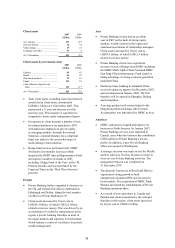 31
31 -
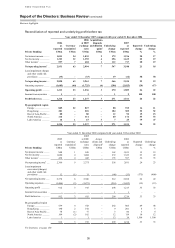 32
32 -
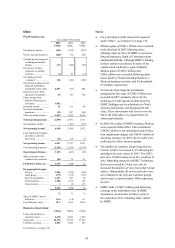 33
33 -
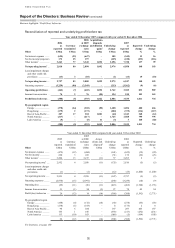 34
34 -
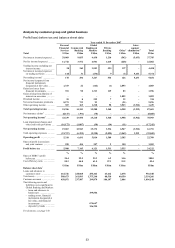 35
35 -
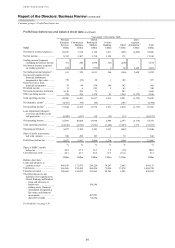 36
36 -
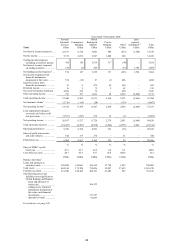 37
37 -
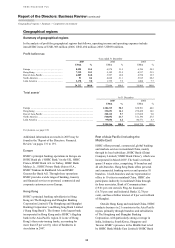 38
38 -
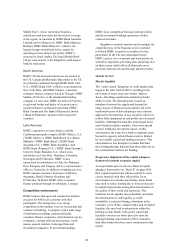 39
39 -
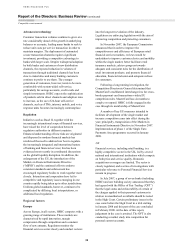 40
40 -
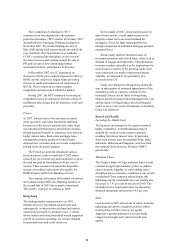 41
41 -
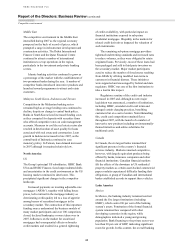 42
42 -
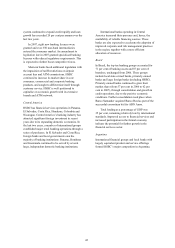 43
43 -
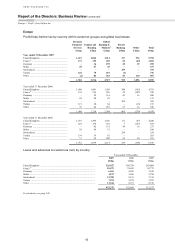 44
44 -
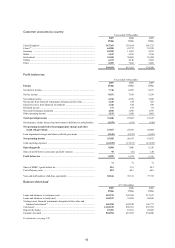 45
45 -
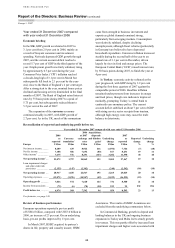 46
46 -
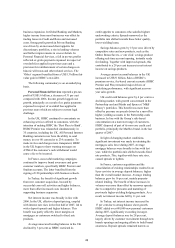 47
47 -
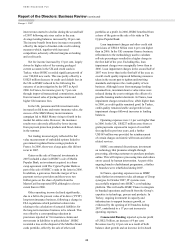 48
48 -
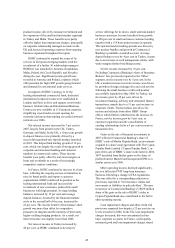 49
49 -
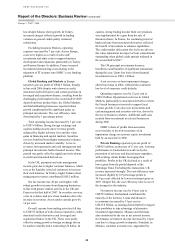 50
50 -
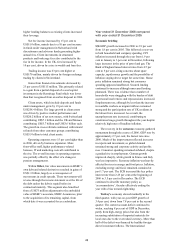 51
51 -
 52
52 -
 53
53 -
 54
54 -
 55
55 -
 56
56 -
 57
57 -
 58
58 -
 59
59 -
 60
60 -
 61
61 -
 62
62 -
 63
63 -
 64
64 -
 65
65 -
 66
66 -
 67
67 -
 68
68 -
 69
69 -
 70
70 -
 71
71 -
 72
72 -
 73
73 -
 74
74 -
 75
75 -
 76
76 -
 77
77 -
 78
78 -
 79
79 -
 80
80 -
 81
81 -
 82
82 -
 83
83 -
 84
84 -
 85
85 -
 86
86 -
 87
87 -
 88
88 -
 89
89 -
 90
90 -
 91
91 -
 92
92 -
 93
93 -
 94
94 -
 95
95 -
 96
96 -
 97
97 -
 98
98 -
 99
99 -
 100
100 -
 101
101 -
 102
102 -
 103
103 -
 104
104 -
 105
105 -
 106
106 -
 107
107 -
 108
108 -
 109
109 -
 110
110 -
 111
111 -
 112
112 -
 113
113 -
 114
114 -
 115
115 -
 116
116 -
 117
117 -
 118
118 -
 119
119 -
 120
120 -
 121
121 -
 122
122 -
 123
123 -
 124
124 -
 125
125 -
 126
126 -
 127
127 -
 128
128 -
 129
129 -
 130
130 -
 131
131 -
 132
132 -
 133
133 -
 134
134 -
 135
135 -
 136
136 -
 137
137 -
 138
138 -
 139
139 -
 140
140 -
 141
141 -
 142
142 -
 143
143 -
 144
144 -
 145
145 -
 146
146 -
 147
147 -
 148
148 -
 149
149 -
 150
150 -
 151
151 -
 152
152 -
 153
153 -
 154
154 -
 155
155 -
 156
156 -
 157
157 -
 158
158 -
 159
159 -
 160
160 -
 161
161 -
 162
162 -
 163
163 -
 164
164 -
 165
165 -
 166
166 -
 167
167 -
 168
168 -
 169
169 -
 170
170 -
 171
171 -
 172
172 -
 173
173 -
 174
174 -
 175
175 -
 176
176 -
 177
177 -
 178
178 -
 179
179 -
 180
180 -
 181
181 -
 182
182 -
 183
183 -
 184
184 -
 185
185 -
 186
186 -
 187
187 -
 188
188 -
 189
189 -
 190
190 -
 191
191 -
 192
192 -
 193
193 -
 194
194 -
 195
195 -
 196
196 -
 197
197 -
 198
198 -
 199
199 -
 200
200 -
 201
201 -
 202
202 -
 203
203 -
 204
204 -
 205
205 -
 206
206 -
 207
207 -
 208
208 -
 209
209 -
 210
210 -
 211
211 -
 212
212 -
 213
213 -
 214
214 -
 215
215 -
 216
216 -
 217
217 -
 218
218 -
 219
219 -
 220
220 -
 221
221 -
 222
222 -
 223
223 -
 224
224 -
 225
225 -
 226
226 -
 227
227 -
 228
228 -
 229
229 -
 230
230 -
 231
231 -
 232
232 -
 233
233 -
 234
234 -
 235
235 -
 236
236 -
 237
237 -
 238
238 -
 239
239 -
 240
240 -
 241
241 -
 242
242 -
 243
243 -
 244
244 -
 245
245 -
 246
246 -
 247
247 -
 248
248 -
 249
249 -
 250
250 -
 251
251 -
 252
252 -
 253
253 -
 254
254 -
 255
255 -
 256
256 -
 257
257 -
 258
258 -
 259
259 -
 260
260 -
 261
261 -
 262
262 -
 263
263 -
 264
264 -
 265
265 -
 266
266 -
 267
267 -
 268
268 -
 269
269 -
 270
270 -
 271
271 -
 272
272 -
 273
273 -
 274
274 -
 275
275 -
 276
276 -
 277
277 -
 278
278 -
 279
279 -
 280
280 -
 281
281 -
 282
282 -
 283
283 -
 284
284 -
 285
285 -
 286
286 -
 287
287 -
 288
288 -
 289
289 -
 290
290 -
 291
291 -
 292
292 -
 293
293 -
 294
294 -
 295
295 -
 296
296 -
 297
297 -
 298
298 -
 299
299 -
 300
300 -
 301
301 -
 302
302 -
 303
303 -
 304
304 -
 305
305 -
 306
306 -
 307
307 -
 308
308 -
 309
309 -
 310
310 -
 311
311 -
 312
312 -
 313
313 -
 314
314 -
 315
315 -
 316
316 -
 317
317 -
 318
318 -
 319
319 -
 320
320 -
 321
321 -
 322
322 -
 323
323 -
 324
324 -
 325
325 -
 326
326 -
 327
327 -
 328
328 -
 329
329 -
 330
330 -
 331
331 -
 332
332 -
 333
333 -
 334
334 -
 335
335 -
 336
336 -
 337
337 -
 338
338 -
 339
339 -
 340
340 -
 341
341 -
 342
342 -
 343
343 -
 344
344 -
 345
345 -
 346
346 -
 347
347 -
 348
348 -
 349
349 -
 350
350 -
 351
351 -
 352
352 -
 353
353 -
 354
354 -
 355
355 -
 356
356 -
 357
357 -
 358
358 -
 359
359 -
 360
360 -
 361
361 -
 362
362 -
 363
363 -
 364
364 -
 365
365 -
 366
366 -
 367
367 -
 368
368 -
 369
369 -
 370
370 -
 371
371 -
 372
372 -
 373
373 -
 374
374 -
 375
375 -
 376
376 -
 377
377 -
 378
378 -
 379
379 -
 380
380 -
 381
381 -
 382
382 -
 383
383 -
 384
384 -
 385
385 -
 386
386 -
 387
387 -
 388
388 -
 389
389 -
 390
390 -
 391
391 -
 392
392 -
 393
393 -
 394
394 -
 395
395 -
 396
396 -
 397
397 -
 398
398 -
 399
399 -
 400
400 -
 401
401 -
 402
402 -
 403
403 -
 404
404 -
 405
405 -
 406
406 -
 407
407 -
 408
408 -
 409
409 -
 410
410 -
 411
411 -
 412
412 -
 413
413 -
 414
414 -
 415
415 -
 416
416 -
 417
417 -
 418
418 -
 419
419 -
 420
420 -
 421
421 -
 422
422 -
 423
423 -
 424
424 -
 425
425 -
 426
426 -
 427
427 -
 428
428 -
 429
429 -
 430
430 -
 431
431 -
 432
432 -
 433
433 -
 434
434 -
 435
435 -
 436
436 -
 437
437 -
 438
438 -
 439
439 -
 440
440 -
 441
441 -
 442
442 -
 443
443 -
 444
444 -
 445
445 -
 446
446 -
 447
447 -
 448
448 -
 449
449 -
 450
450 -
 451
451 -
 452
452 -
 453
453 -
 454
454 -
 455
455 -
 456
456 -
 457
457 -
 458
458 -
 459
459 -
 460
460 -
 461
461 -
 462
462 -
 463
463 -
 464
464 -
 465
465 -
 466
466 -
 467
467 -
 468
468 -
 469
469 -
 470
470 -
 471
471 -
 472
472 -
 473
473 -
 474
474 -
 475
475 -
 476
476
 |
 |
39
The Competition Commission (‘CC’)
commenced an investigation into the payment
protection insurance (‘PPI’) market in February 2007
and published its Emerging Thinking document in
November 2007. Provisional findings are due in
May 2008 and the final report towards the end of the
year. Similarly, the Financial Services Authority
(‘FSA’) conducted the third phase of its review of
the sales processes and systems around the sale of
PPI policies and is now undertaking further
assessment of firms’ performance in this area.
In December 2007, the CC announced its
decision to lift the price controls imposed in 2003 on
HSBC and the other three largest banks providing
services to small and medium-sized enterprises in
the UK. This is expected to result in greater
competition and innovation within the market.
During 2007, the OFT continued to investigate
competition issues in connection with the setting of
multilateral interchange fees for domestic credit card
payments.
France
In 2007, interest rates in the eurozone increased
while growth in real estate investment stabilised.
Income tax relief on new personal real estate loans
was introduced following the presidential elections,
though potential benefits to customers were offset by
higher interest rates. Real estate mortgage loans
remained the primary product by which banks
attracted new customers and, as a result, competitive
pricing led to decreased margins.
The French government introduced various
fiscal incentives in the second half of 2007 which
reduced tax on overtime pay and introduced a cap on
the total tax paid by households at 50 per cent of
income. These measures increased the disposable
income of wealthier individuals who qualify for
HSBC Premier and Private Banking services.
The commercial treasury bills market contracted
and companies had difficulty obtaining facilities in
the second half of 2007 due to market uncertainty.
This trend is expected to continue in 2008.
Hong Kong
The lending market remained active in 2007,
initially driven by investment-related loans and,
subsequently, as interest rates declined and market
uncertainty increased, by property loans. A robust
labour market and rising household wealth supported
growth in consumer spending. As a result, demand
for personal loans and credit cards rose.
In the middle of 2007, downward pressure on
interest rates and an overall improvement in the
property market led to increased demand for
mortgages. Prices for high-end properties rose,
though competition in traditional mortgage products
remained fierce.
Rising equity markets stimulated sales of
investment products and related loans. After a lull in
demand in August and September, when disruption
to money markets intensified as the implications for
asset-backed securities of the growing credit crisis
were reassessed, the market experienced intense
volatility, accentuated by the possibility of a
recession in the US.
Funds were attracted to Hong Kong during the
year in anticipation of sustained appreciation of the
renminbi as well as a positive outlook for the
mainland Chinese stocks listed in Hong Kong.
Deposit growth remained robust throughout the year
and the status of Hong Kong as the chief financial
centre to service the needs of businesses in Southern
China was enhanced.
Rest of Asia-Pacific
(including the Middle East)
The business environment in the region remained
highly competitive, notwithstanding increased
demand for credit in Asian countries partially
resulting from lower interest rates. In particular,
short-term interest rates in mainland China, India,
Indonesia, Malaysia and Singapore were less than
the nominal Gross Domestic Product (‘GDP’)
growth rate.
Mainland China
The People’s Bank of China indicated that it would
continue to apply tight monetary policy to address
excess domestic liquidity, to curb lending and to
strengthen macro-economic conditions. Loan growth
in mainland China remained robust despite this
tightening and the benchmark one-year lending rate
increased to 7.47 per cent by the end of 2007. The
renminbi reserve requirement ratio for depository
financial institutions increased to 14.5 per cent.
India
Loan growth in 2007 slowed due to earlier monetary
tightening and adverse regulatory policies which
restricted the activities of recovery agents.
Aggressive growth strategies by several banks
compressed margins and reduced overall asset
quality.
